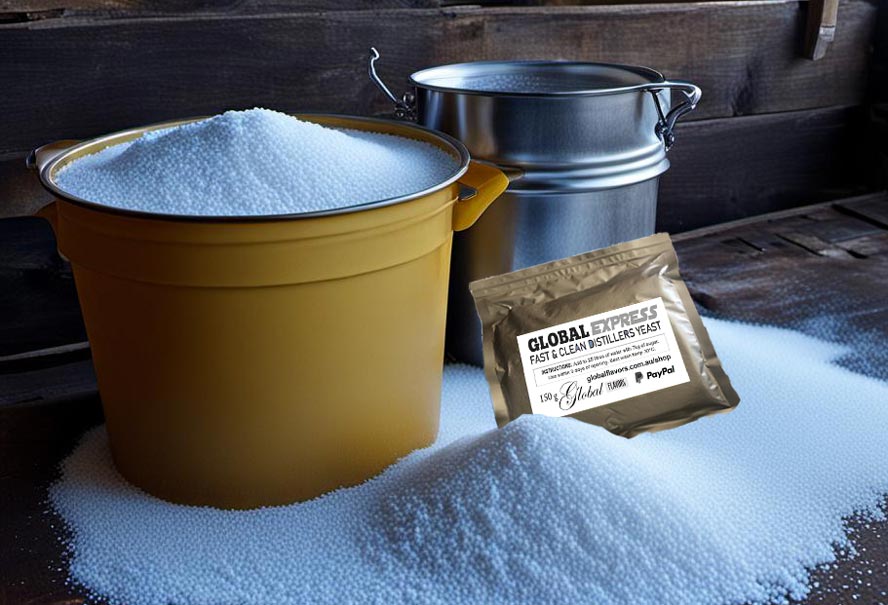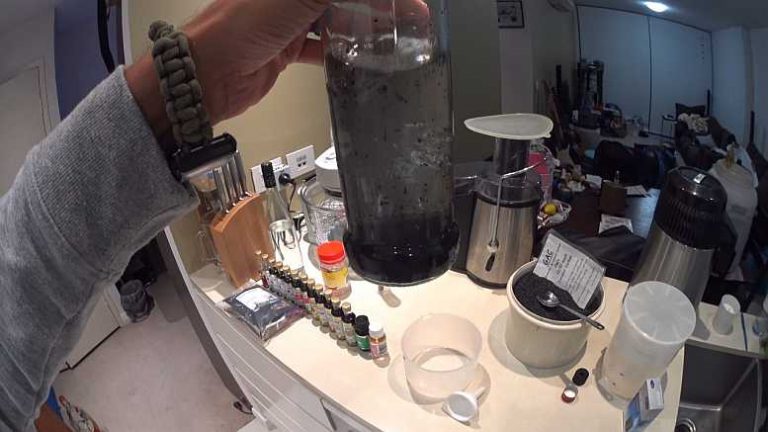Getting Started with Sugar Wash
Essential Tips and Tricks for Beginners
GETTING STARTED with sugar wash is an exciting venture for beginners in the realm of home distillation.
While grain-based mashes are commonly used in distillation, sugar wash offers a simpler and more accessible option, making it an excellent choice for those new to the craft.
To ensure a successful and enjoyable experience, it’s essential to understand the fundamentals and arm oneself with the necessary tips and tricks.
First and foremost, beginners should familiarize themselves with the basic ingredients and equipment required for sugar wash distillation.
Here’s How to Get a FREE Global Express Fast & Clean Distillers Yeast With Your Spirit Essence Order
Unlike grain mashes, which involve the laborious process of mashing grains, sugar wash typically consists of a mixture of water, sugar, and yeast.
Additionally, a fermentation vessel, airlock, hydrometer, and distillation apparatus are essential tools for the process.
When creating a sugar wash, it’s crucial to use high-quality ingredients and adhere to precise measurements.
The ratio of sugar to water will determine the alcohol content of the wash, so beginners should follow a reliable recipe to achieve the desired results.
Get BRILLIANT Quality Alcohol Yield With This Amazing Distillers Yeast!
Additionally, selecting the right type of yeast is essential, as different strains will produce varying flavors and alcohol yields.
Once the sugar wash is prepared, fermentation is the next critical step in the distillation process. Beginners should carefully monitor the temperature and pH levels during fermentation to ensure optimal yeast activity and avoid off-flavors.
Using an airlock on the fermentation vessel will prevent contamination while allowing carbon dioxide to escape, reducing the risk of a buildup of pressure.
After fermentation is complete, it’s time to move on to the distillation process. Beginners should familiarize themselves with the operation of their distillation apparatus and take necessary safety precautions, such as ensuring proper ventilation and using a heat source with precise temperature control.
Properly heating the wash to the appropriate temperature will separate alcohol from water and other impurities, resulting in a concentrated alcohol vapor that can be collected and condensed into liquid form.
Find Out Why Home Distilling Legend Zapper Says Global Express Distillers Yeast is the BEST!
Throughout the distillation process, beginners should pay close attention to the temperature and alcohol content of the distillate using a thermometer and hydrometer.
Discarding the initial “heads” and “tails” of the distillate will help remove any undesirable compounds, leaving behind the high-quality “hearts” that comprise the final product.
Melon Midori, Black or White Sambucca, Espresso or Calypso Coconut All Yours Right Here!
For those looking to elevate their homemade spirits to the next level, incorporating spirit essences offers a tantalizing opportunity to expand their repertoire. These concentrated flavorings capture the essence of various spirits, allowing home distillers to transform their neutral alcohol into a diverse array of libations, from rich bourbons and smooth whiskies to indulgent liqueurs and classic gins.
With a wide range of essences available on the market, enthusiasts can experiment with different flavors and styles, adding a personal touch to their creations and exploring new tastes without the need for complex aging processes or expensive equipment.
Using spirit essences not only provides versatility in flavor but also allows home distillers to customize their beverages to suit their preferences. Whether aiming for the bold oakiness of a Kentucky bourbon or the botanical complexity of a London dry gin, the precise dosing of spirit essences enables enthusiasts to fine-tune their creations to achieve the desired taste profile.
Find Out More About the World’s BEST in Home Distilling Spirit Essences & More
By simply adding the appropriate essence to their neutral alcohol and allowing it to blend and mellow, home distillers can effortlessly craft high-quality spirits that rival their commercial counterparts, opening up a world of flavor possibilities right in their own home distillery.
In conclusion, getting started with sugar wash requires careful attention to detail and a willingness to learn.
By following essential tips and tricks for beginners, such as using high-quality ingredients, monitoring fermentation, and practicing safe distillation techniques, aspiring home distillers can embark on a rewarding journey toward crafting their own homemade spirits.
With patience and practice, mastering the art of sugar wash distillation is well within reach for enthusiasts eager to explore the world of home distillation.
Until next time… Happy Distilling!
Cheers

Questions about Spirit Essences or Home Distilling?
Phone John direct NOW – 0414 955 743
Keith’s Global Flavors Spirit Essences Facebook Page
Global Flavors’ HOME DISTILLERS CLUB Facebook Group
Starting out with sugar wash is a thrilling adventure, especially for newbies diving into the world of home distillation.
While many folks opt for grain-based mashes, sugar wash presents a simpler and more accessible alternative, perfect for those just starting their distilling journey. To make sure it’s smooth sailing, it’s crucial to grasp the basics and equip yourself with some handy tips and tricks.
First things first, newcomers should get acquainted with the essential ingredients and gear needed for sugar wash distillation. Unlike the hassle of mashing grains for traditional mashes, sugar wash usually boils down to a mix of water, sugar, and yeast. Alongside these, you’ll want to have a fermentation vessel, airlock, hydrometer, and distillation apparatus handy.
When whipping up a sugar wash, quality ingredients and precise measurements are key. The sugar-to-water ratio holds the power to determine the wash’s alcohol content, so sticking to a reliable recipe is a must for nailing your desired outcome. Plus, picking the right yeast strain is vital – different strains pack different flavors and alcohol yields.
Once the sugar wash is prepped, fermentation takes the spotlight. Newbies should keep a close eye on the temperature and pH levels during fermentation to ensure the yeast is doing its thing optimally and avoid any funky off-flavors. Using an airlock on your fermentation vessel keeps things contamination-free while letting excess carbon dioxide escape, preventing any pressure build-up.
Once fermentation wraps up, it’s time to dive into distillation. Newbies should get comfy with their distillation apparatus and follow safety protocols like ensuring proper ventilation and using a heat source with precise temperature control. Nailing the right temperature separates alcohol from water and other nasties, leaving you with a concentrated alcohol vapor ready to be collected and condensed into liquid form.
Throughout the distillation process, keeping tabs on the temperature and alcohol content using a thermometer and hydrometer is key. Ditching the initial “heads” and “tails” of the distillate helps weed out any unwanted compounds, leaving behind the prized “hearts” that make up the final product.
In a nutshell, kicking off your sugar wash journey calls for attention to detail and a willingness to learn. By embracing handy tips and tricks like using top-notch ingredients, keeping an eye on fermentation, and practicing safe distillation methods, budding home distillers can embark on an exciting voyage into the world of crafting their own homemade spirits. With a sprinkle of patience and practice, mastering the art of sugar wash distillation is well within reach for enthusiasts itching to explore the realms of home distillation.






